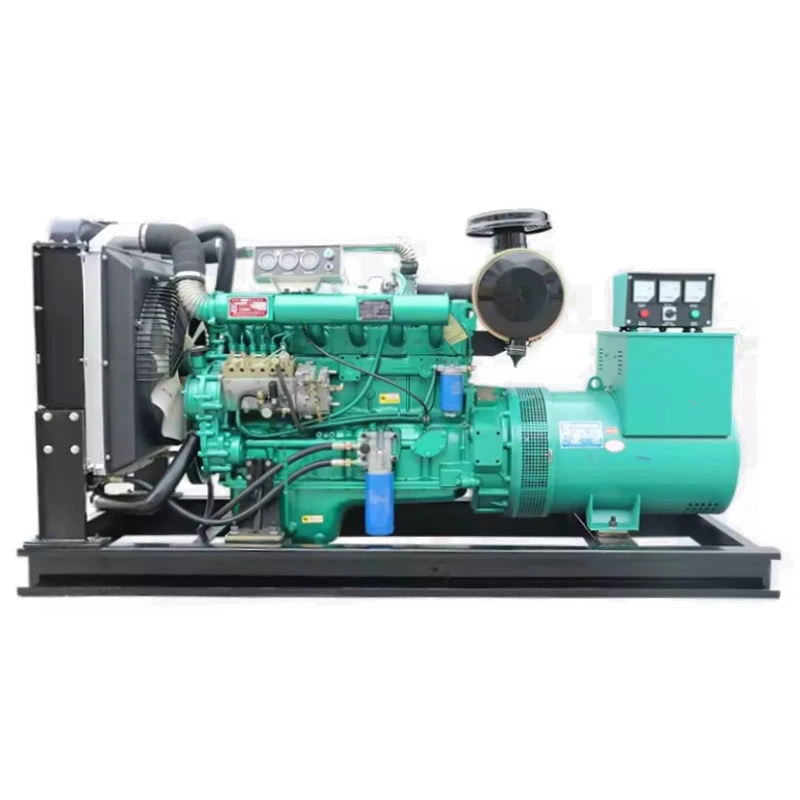Introduction
Diesel generators are crucial power sources used in various applications ranging from residential to industrial settings. While these generators are known for their reliability and efficiency, their performance can be significantly affected when operated at high altitudes. High-altitude locations pose unique challenges for diesel generators due to lower oxygen levels, temperature fluctuations, and other environmental factors. In this article, we will explore the impact of high altitudes on diesel generators and discuss strategies to optimize their performance in such conditions.
Understanding High-Altitude Challenges
High-altitude locations are typically defined as areas situated above 5,000 feet above sea level. At higher altitudes, the air density decreases, resulting in lower oxygen levels. https://www.lkpowerplant.com/product/quick-delivery-emergency-standby-power-400kw-silent-type-diesel-generator-set-for-peru/ in oxygen content affects the combustion process in diesel engines, leading to incomplete fuel burning and decreased power output. The performance of a diesel generator at high altitudes is influenced by factors such as air pressure, temperature, humidity, and altitude above sea level.
One of the key challenges faced by diesel generators at high altitudes is reduced engine power output. The lower oxygen levels at high altitudes result in a leaner air-fuel mixture, which can lead to incomplete combustion and reduced power generation. Additionally, the cooling system of the generator may be less effective due to the thinner air, leading to potential overheating issues. These challenges can impact the overall efficiency and reliability of diesel generators operating in high-altitude environments.
Optimizing Diesel Generators for High-Altitude Operations
To overcome the challenges associated with high-altitude operations, several strategies can be employed to optimize the performance of diesel generators. These strategies include selecting the right generator model, adjusting fuel-air ratios, implementing cooling system modifications, and conducting regular maintenance checks. By following these best practices, operators can ensure that their diesel generators operate efficiently and reliably at high altitudes.
1. Selecting the Right Generator Model
When operating a diesel generator at high altitudes, it is essential to choose a model that is specifically designed for such conditions. High-altitude generators are equipped with features that compensate for the reduced oxygen levels, ensuring optimal performance. These generators are typically designed to deliver higher power outputs and are more fuel-efficient compared to standard models. By selecting a high-altitude generator, operators can minimize the impact of environmental factors on generator performance.
2. Adjusting Fuel-Air Ratios
To compensate for the lower oxygen levels at high altitudes, it may be necessary to adjust the fuel-air ratios of the diesel generator. By optimizing the air-fuel mixture, operators can ensure proper combustion and maximize power output. This adjustment can be done by modifying the fuel injection system or utilizing electronic control units that regulate the fuel supply based on altitude and other environmental conditions. By maintaining the correct fuel-air ratios, operators can improve the efficiency and reliability of their diesel generators at high altitudes.
3. Implementing Cooling System Modifications

The cooling system of a diesel generator plays a critical role in maintaining optimal operating temperatures. At high altitudes, the thinner air can reduce the cooling capacity of the generator, leading to potential overheating issues. To prevent overheating, operators can implement cooling system modifications such as installing additional cooling fans, improving airflow around the engine, or using specialized coolant formulations. These modifications help dissipate heat more effectively and ensure that the generator operates within safe temperature limits.
4. Conducting Regular Maintenance Checks
Regular maintenance is essential to ensure the reliable operation of diesel generators at high altitudes. Operators should conduct routine inspections and servicing to identify and address potential issues before they escalate. Maintenance tasks may include checking fuel filters, inspecting electrical connections, monitoring engine performance, and replacing worn-out components. By following a proactive maintenance schedule, operators can prolong the lifespan of their diesel generators and minimize the risk of unexpected failures in high-altitude environments.
Conclusion
Operating diesel generators at high altitudes presents unique challenges that can impact performance and reliability. By understanding the effects of high-altitude conditions on generator operation and implementing optimization strategies, operators can enhance the efficiency and longevity of their diesel generators in such environments. Selecting the right generator model, adjusting fuel-air ratios, implementing cooling system modifications, and conducting regular maintenance checks are essential steps to ensure that diesel generators perform optimally at high altitudes. With proper planning and maintenance, diesel generators can continue to be reliable power sources in high-altitude applications.
